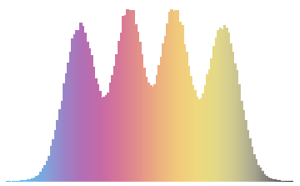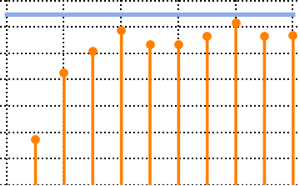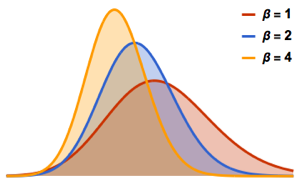円アンサンブル(COE,CUE,...)
円アンサンブルはユニタリ行列族であり,分布はさまざまなユニタリ変換のもとで不変である.これらは主に統計力学,整数論,組合せ論,原子物理学等において使用される.
円実数アンサンブル(CRE)の行列は直交行列である. »
In[1]:=
cre = RandomVariate[CircularRealMatrixDistribution[5]];In[2]:=
OrthogonalMatrixQ[cre]Out[2]=
円ユニタリアンサンブル(CUE)の行列はユニタリ行列である. »
In[3]:=
cue = RandomVariate[CircularUnitaryMatrixDistribution[5]];In[4]:=
UnitaryMatrixQ[cue]Out[4]=
円直交アンサンブル(COE)の行列は対称行列かつユニタリ行列である. »
In[5]:=
coe = RandomVariate[CircularOrthogonalMatrixDistribution[5]];In[6]:=
SymmetricMatrixQ[coe] && UnitaryMatrixQ[coe]Out[6]=
円シンプレクティックアンサンブル(CSE)は自己双対ユニタリ四元数行列である. »
完全なWolfram言語入力を表示する
In[8]:=
cse = RandomVariate[CircularSymplecticMatrixDistribution[5]];In[9]:=
UnitaryMatrixQ[cse] && selfdualQuaternionicQ[cse]Out[9]=
円四元数アンサンブル(CQE)の行列はシンプレクティックユニタリ行列である. »
完全なWolfram言語入力を表示する
In[11]:=
cqe = RandomVariate[CircularQuaternionMatrixDistribution[5]];In[12]:=
UnitaryMatrixQ[cqe] && symplecticMatrixQ[cqe]Out[12]=
CUE,COE,CSEの行列の固有値は単位長を持ち,位相は一様に分布している.
完全なWolfram言語入力を表示する
Out[13]=

2次元CUEの固有値の位相の結合分布を可視化し,実際の密度と比較する.
In[14]:=

evs\[ScriptCapitalD] =
MatrixPropertyDistribution[Arg[Eigenvalues[x]],
x \[Distributed] CircularUnitaryMatrixDistribution[2]];
\[CurlyPhi]s =
RandomSample /@ RandomVariate[evs\[ScriptCapitalD], 10^5];完全なWolfram言語入力を表示する
Out[15]=




























